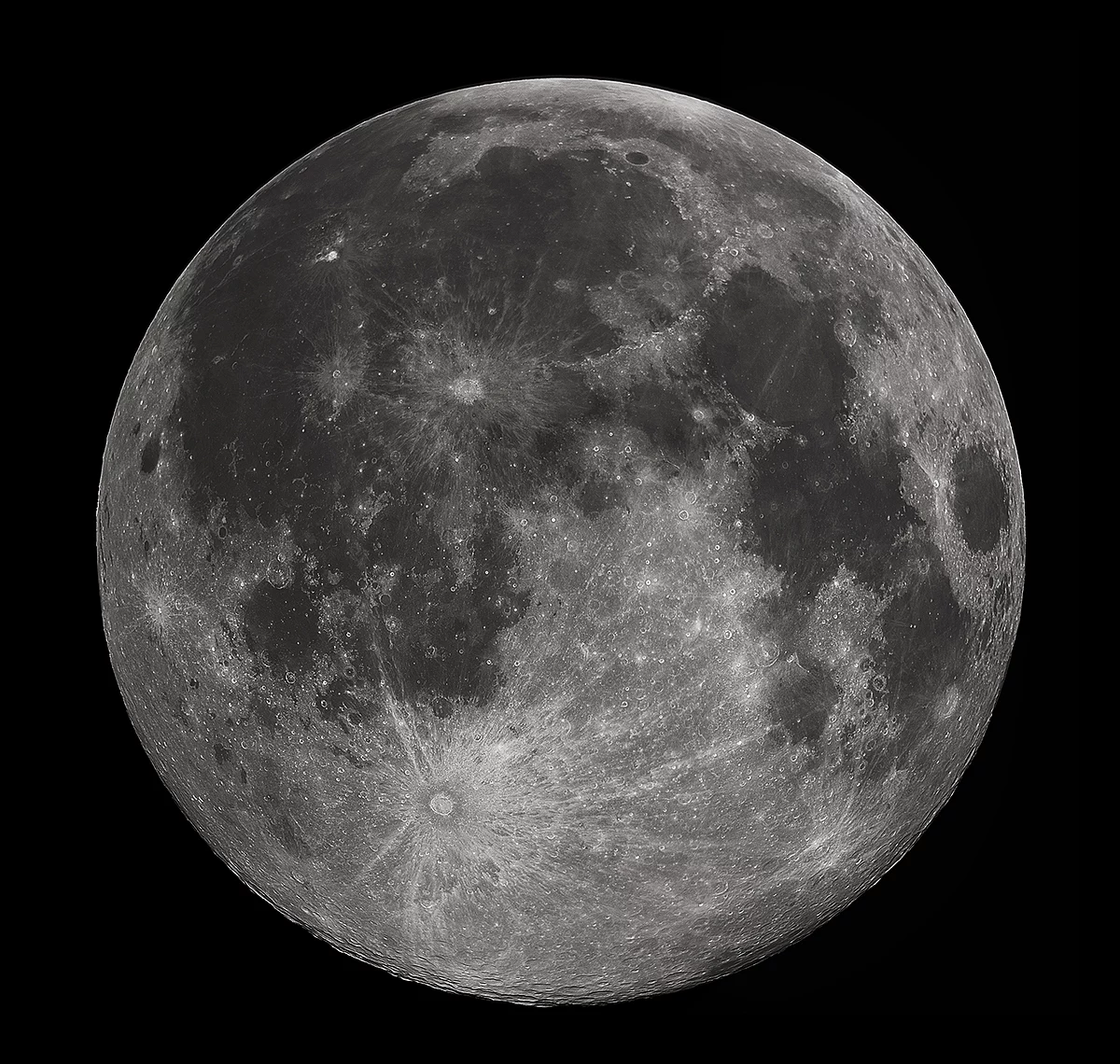The Moon is Earth only natural satellite. As well as the only place outside Earth, humans have gone to. We first reached the Moon in 1969.

Table of Contents
Remarkable data about Moon:
| Radius | 1737.4 km |
| Mass | 7.348 × 10^22 kg |
| Gravity | 1.62 m/s² |
| Distance from Earth | 384400 km |
| Age | 4.53 billion years |
| Orbital period | 27.3 days |
| Natural satellites | None |
Key Features of Moon:
- Surface Features: The Moon’s surface is marked by numerous craters, maria, and highlands. Craters are formed by asteroid impacts, maria are dark basaltic plains from ancient volcanic activity, and highlands are rugged, heavily cratered regions that are older than the maria.
- Internal Structure: The Moon’s internal structure consists of a thin crust, a silicate mantle, and a small core likely composed of iron and nickel. The core is partially molten, unlike Earth’s fully molten outer core.
- Lack of Atmosphere: The Moon has a very thin exosphere composed of trace gases like hydrogen, helium, and neon. This lack of a significant atmosphere means there is no weather, and the surface is unprotected from meteoroid impacts and solar radiation.
- Gravity: The Moon’s gravity is about one-sixth that of Earth, affecting the way objects move and the lack of liquid water on its surface. This weak gravity also contributes to its low escape velocity.
- Tidal Locking: The Moon is tidally locked to Earth, meaning the same side always faces our planet. This occurs because its rotation period matches its orbit around Earth, resulting in one hemisphere always being visible from Earth.
- Phases and Eclipses: The Moon goes through phases (new moon, crescent, quarter, gibbous, and full moon) due to its changing position relative to Earth and the Sun. Eclipses occur when the Earth or Moon casts a shadow on the other during their orbit.
- Temperature Extremes: The Moon experiences extreme temperature variations, with daytime temperatures reaching up to 127°C (260°F) and nighttime temperatures dropping to about -173°C (-280°F).
- Water Ice: Water ice has been discovered in permanently shadowed craters near the lunar poles. This ice is a valuable resource for potential future lunar exploration and habitation.
- Regolith: The Moon’s surface is covered by regolith, a layer of loose, fragmented material formed by billions of years of meteoroid impacts. This regolith is a mixture of dust, small rocks, and broken pieces of the lunar crust.
- Magnetic Field: The Moon has a weak and patchy magnetic field, much weaker than Earth’s, indicating it lacks a global dynamo effect in its core. This limited magnetic field offers minimal protection from solar and cosmic radiation.
Moon Position in the Solar System:
- Orbit Around Earth: The Moon orbits Earth at an average distance of about 238,855 miles (384,400 kilometers). This orbit takes approximately 27.3 days to complete, which is known as a sidereal month.
- Earth-Moon System: The Earth and Moon form a unique system where the Moon is the largest natural satellite relative to its planet. The gravitational interaction between the two bodies causes tides on Earth and has gradually slowed Earth’s rotation over billions of years.
- Influence on Earth: The Moon’s gravitational pull stabilizes Earth’s axial tilt, which helps maintain a relatively stable climate over long periods. This stabilization is crucial for the development and sustainability of life on Earth.
- Position Relative to the Sun: The Moon orbits Earth as Earth orbits the Sun. The Moon’s phases (new, crescent, quarter, gibbous, and full) result from the changing angles between the Sun, Earth, and the Moon as they move through space.
- Tidal Locking: The Moon is tidally locked to Earth, meaning it rotates on its axis in the same time it takes to orbit Earth. As a result, the same side of the Moon always faces Earth, while the far side is always hidden from direct view.
- Eclipses: The Moon’s position relative to Earth and the Sun causes solar and lunar eclipses. A solar eclipse occurs when the Moon passes between Earth and the Sun, casting a shadow on Earth. A lunar eclipse happens when Earth passes between the Sun and the Moon, casting a shadow on the Moon.
